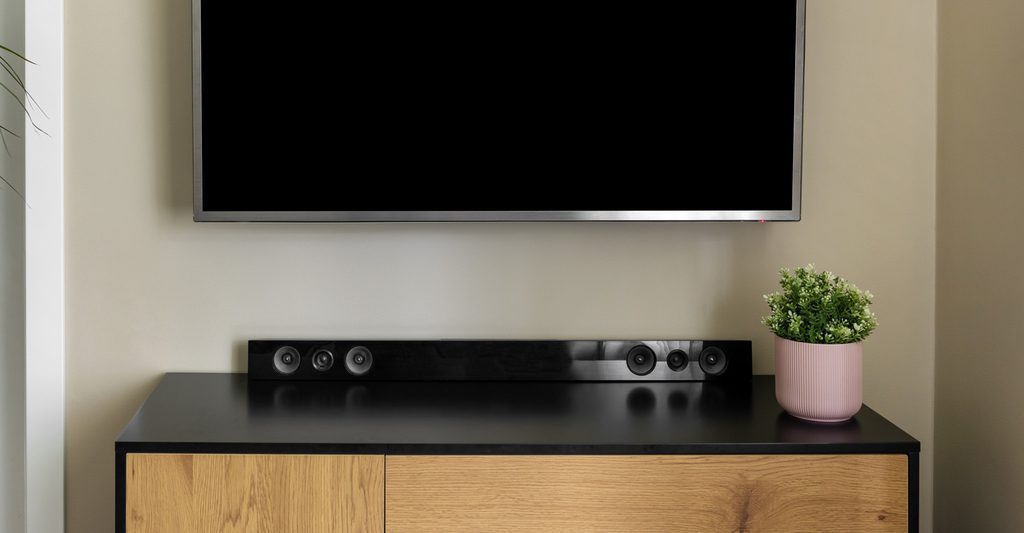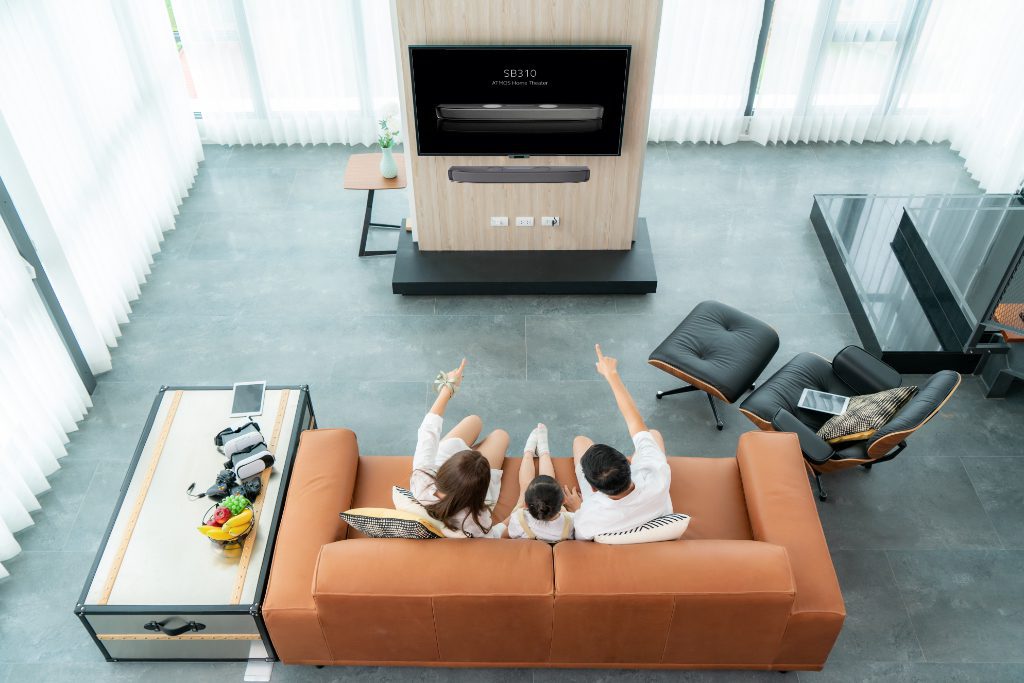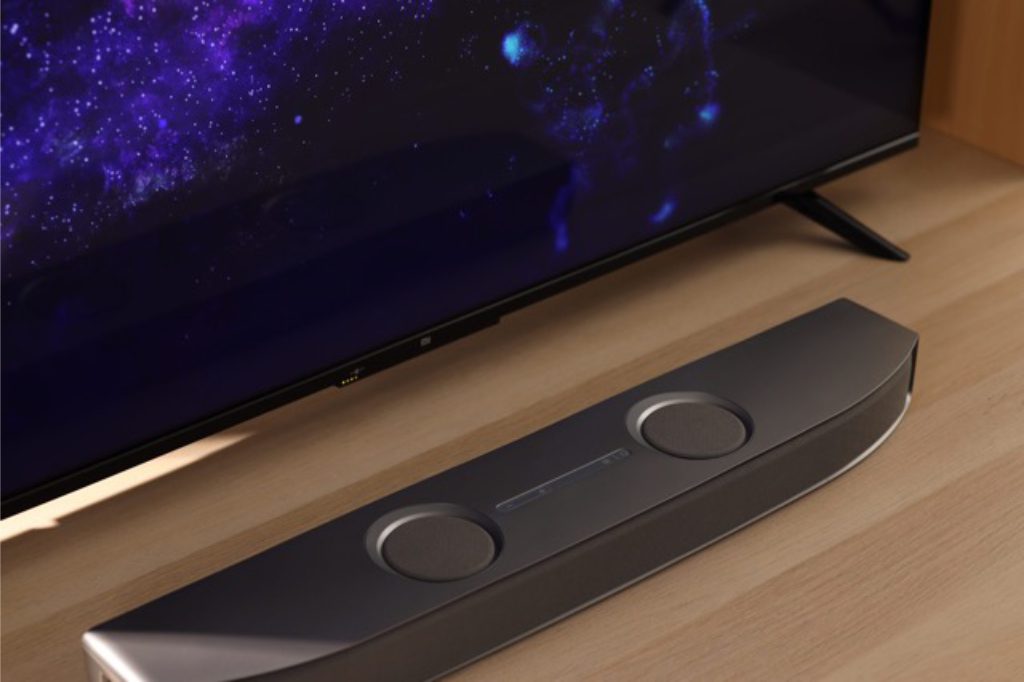What is a Soundbar?
A soundbar is a long, narrow, and compact audio speaker system designed to enhance your TV viewing experience. It is a single unit that houses multiple speakers and can be mounted on a wall or placed in front of a TV. Unlike traditional home theater systems, soundbars eliminate the need for multiple speakers and wires, making it an easy and convenient solution to enjoy high-quality audio.
Why Do I Need a Soundbar?
If you’re a movie or music enthusiast, a soundbar is a must-have addition to your home entertainment system. It significantly improves the audio quality of your TV and enhances the overall viewing experience. Soundbars are specially designed to provide rich and clear audio with powerful bass, which is lacking in TV speakers.
Moreover, soundbars are perfect for small living spaces or rooms where you cannot accommodate a complete home theater system. They are also an ideal choice for those who want to enjoy a cinematic experience without spending a fortune on expensive equipment.
What Does a Soundbar Do?
A soundbar’s primary function is to enhance the audio quality of your TV. It does this by providing a wider soundstage, which makes the audio more immersive and realistic. Soundbars also offer better clarity and dialogues, making it easier to understand what is being said on screen.
Additionally, soundbars come with different sound modes, including movie, music, and gaming, which optimize the audio for each type of content. Soundbars also feature Bluetooth connectivity, allowing you to stream music directly from your phone or other devices.
How Do Soundbars Work
Soundbars are designed to simulate surround sound by utilizing different speaker drivers, including tweeters, mid-range, and subwoofers. These speakers are aligned in a specific way to create a wider soundstage, giving the impression that the sound is coming from different directions.
Most soundbars also come with a separate subwoofer, which is responsible for producing deep and powerful bass. The subwoofer can be wireless or wired, depending on the model you choose. Some high-end soundbars also come with Dolby Atmos, a technology that creates a three-dimensional sound experience by bouncing sound off the ceiling.
How to Connect a Soundbar?
Connecting a soundbar is a simple and straightforward process. Most soundbars come with different connectivity options, including HDMI, optical, and Bluetooth.
To connect a soundbar to your TV using an HDMI cable, plug one end of the cable into the HDMI ARC port on your TV and the other end into the HDMI ARC port on your soundbar. If your TV does not have an HDMI ARC port, you can use an optical cable to connect the two devices.
If your soundbar supports Bluetooth, you can connect it wirelessly to your phone, tablet, or other devices. To do this, turn on Bluetooth on your device and search for the soundbar’s name. Once connected, you can stream music or other content directly to your soundbar.
How come a soundbar is better than other audio solutions?

Price
Efficiency
Acoustic experience
The environmental factor to consider before buying a soundbar
-
- How much space do I have in my room?
- Where will I put my TV?
- How much space do I have for my soundbar? Will my soundbar be mounted to the wall?

How to choose a soundbar?
Size
Technically, you can pair any size of soundbar with your TV. However, if you are a person who is aesthetic, you might want to consider the proportion of your TV versus your soundbar. If you have a soundbar that is wider than your TV, the visual balance might be distorted.
Active vs Passive
Passive
Active
An active soundbar means that the soundbar does have built-in amplifiers and channel processors. Active soundbars do not need extra receivers to operate. Because an active soundbar is an all-inclusive device, there will be less wires and less set up to do.
Which kind of soundbar do I need? Passive or Active?
The answer is simple. If you are looking to upgrade your TV’s audio, an active soundbar would be your best choice. Passive soundbars are better suited for custom installations. If you are aesthetic and want your soundbar to disappear as part of the TV, you should choose passive soundbars.
Soundbar Channels
2-channel soundbar
3-channel soundbar
5-channel soundbar
7-channel soundbar
Dolby Atmos soundbar
How many channels do I need?
HDMI ARC
Wireless Connectivity
Bluetooth
Wi-Fi
Optical Port
USB Inputs
How will I control my soundbar?

Best soundbar in 2022
How will I control my soundbar?

- 3.1.0 channel
Three individual speakers that are located at the center, left, and right of a soundbar. - Output power 90W RMS
- XbowFlector 3D audio technology for outstanding and immersive 3D sounds
- Wi-Fi support 802.11 a/b/g/n/ac dual band
- Bluetooth 5.0
- HDMI 2.1*2, supports eARC
- Supports SPDIF
- Audio streaming
- Modes: Movie/Music/News/Sport/Game
- 3.1.0 channel
For more information on Jazz Hipster ATMOS Soundbar SB310, please visit us at https://jazzhipster.com/home-theater-speaker/sb310/.




